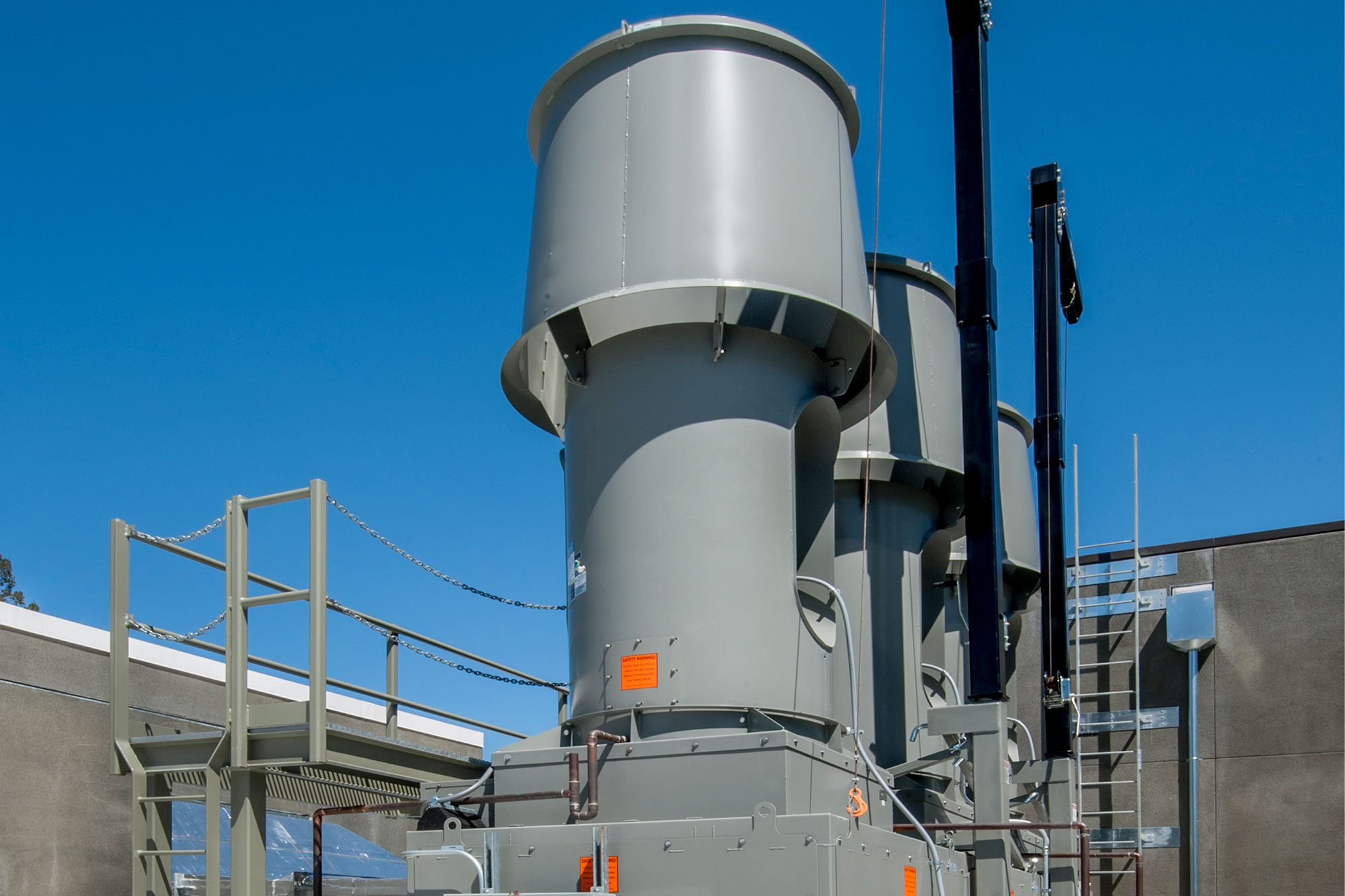Chemical-Monitored Exhaust
Laboratory
Safely Reduce Exhaust Airflows, Save Energy
Recent regulatory updates have significantly modified the suggested operation of laboratory exhaust fans. As stated in the 2022 version of ANSI Z9.5: “Maintaining a constant exit velocity or assigning a prescriptive minimum allowable minimum exit velocity is not sufficient to meet this standard.”
$
Minimize the amount of bypass air being re-circulated by the exhaust fan stack to maintain a prescriptive minimum stack velocity and safely reduce exhaust airflows. That equates to an estimated $0.40-$0.75/CFM in annual savings and ROI in a matter of months.
ANSI Z9.5
AntrumXTM allows laboratories to execute a variable exhaust volume control strategy as an ANSI Z9.5-approved exhaust fan stack design “where the minimum volume flow rate is dependent upon measured constituents within the exhaust stream.”
Title 24
Reducing ventilation in laboratories based on environmental sensing offers opportunities for energy conservation. As building codes like California’s Title 24 Part 6 become standard across the nation, AntrumX can help safely reduce exhaust fan stack velocity.
Sample Lab Exhaust Installation
- Monitoring Panel
- Air Accelerator
- 1″ Duct Probe – Supply Air Pickup
- 8″ Duct Probe (option 1) – Exhaust Fan Riser
- 8″ Duct Probe (option 2) – Exhaust Fan Stack
SA – Supply Air GE – General Exhaust FE – Fume Hood Exhaust
Commonly Sensed Points: NH3 | CO2 | CO | DP | CH2O | NO2 | O2 | O3 | PM0.1 | PM0.3 | PM0.5 | PM1.0 | PM2.5 | R-410a, R32, R454B | RH | TVOC | TVOC (PID) | TVOCi

